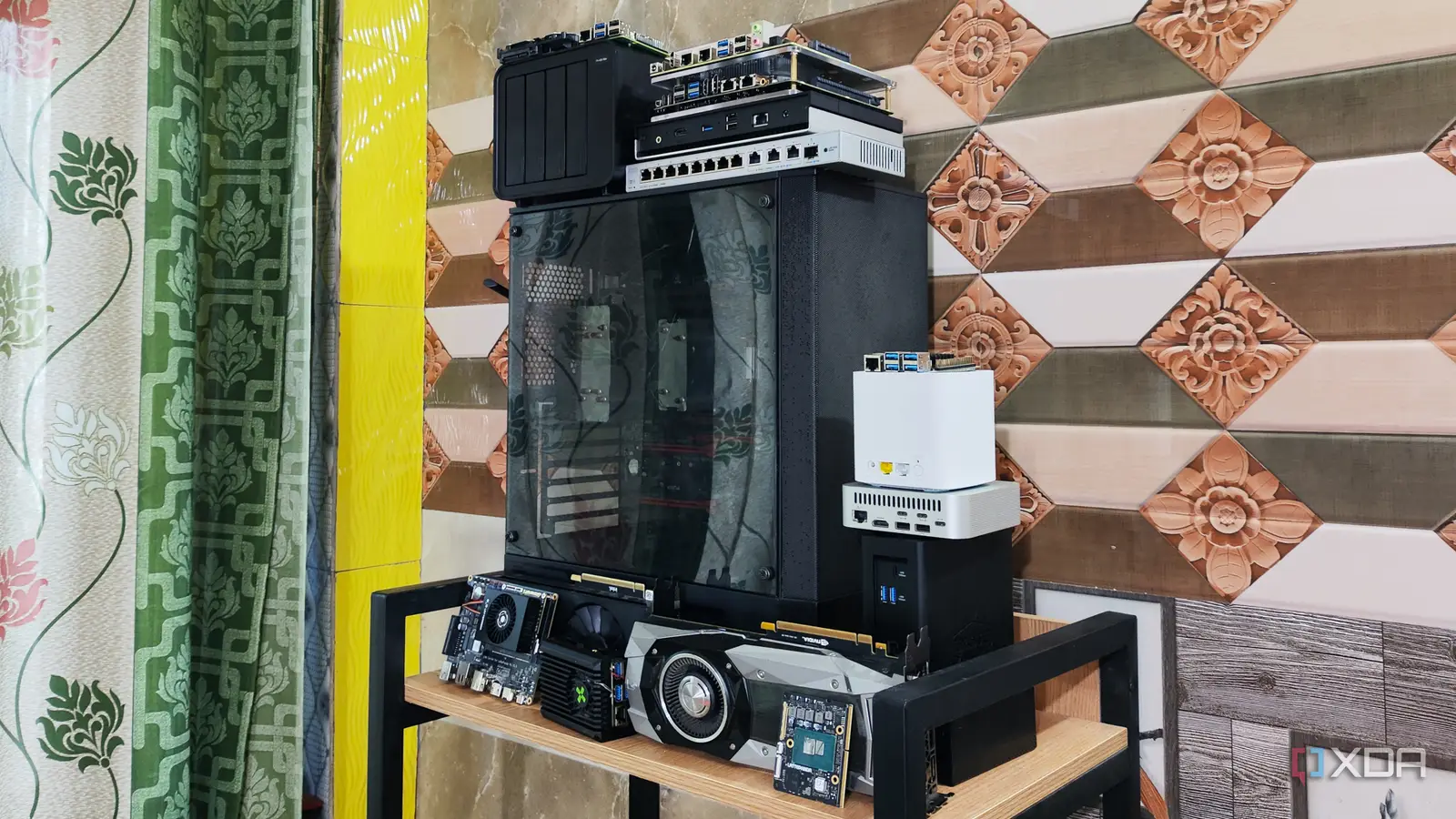You don’t need to spend too much money to start your home lab – here’s how you can do so for cheap

Before diving headfirst into the home lab rabbit hole, I was always under the impression that you needed powerful enterprise-tier PCs for server projects. But after spending a few years tinkering with virtualization platforms, containerization distros, and NAS-centric operating systems, I can confirm that you don’t have to splurge on overly expensive hardware when building a home lab.
In fact, home servers are so versatile that you can incorporate practically any rig into your setup – including devices costing well under $150 – and still expect decent performance in server projects. So, here’s a byte-sized piece on the type of hardware you can grab for a budget-friendly home lab and the amount of mileage you’ll get from it.
SBCs work well as container-hosting hubs
You can run dozens of containers on an N100 board
Starting with the cheapest devices you can use as server nodes, Single-Board Computers have become a lot more powerful over the years, and there’s a surprisingly large number of projects that pair well with these tiny systems. Arm-powered boards tend to be on the cheaper side, and they’re pretty good at running services inside containerized environments. As long as you’ve got a mainline Raspberry Pi board that’s relatively new, you can use it as a decent self-hosting platform. I use my $80 Raspberry Pi 5 as an all-in-one monitoring station that runs everything from uptime trackers to network scanners and dashboards – all without breaking a sweat.
But if you want more performance and wider compatibility with different container images (and distros), you might want to go with an x86 board instead. I’ve been playing around with the $85 Radxa X4 over the last year, and it works surprisingly well as a Proxmox node. Between its Intel N100 processor and 8GB memory, the SBC can even run two virtual machines (make it four, if you go for CLI distros) and a handful of containers. The same holds true for my ZimaBoard 2, which costs more but ships with a faster N150 processor. Heck, I initially used the SBC to tinker with ESXi, and it worked surprisingly well as long as I didn’t keep more than two GUI virtual machines active at once. If you’re curious about self-hosted setups and aren’t too concerned about running multiple VMs, SBCs make for killer container-hosting machines.
NUCs and mini-PCs let you tinker with complex projects
An N305 CPU + 16GB of RAM make for a terrific combo
Mini-PCs may have larger footprints and higher footprints than their SBC counterparts, but the extra space and monetary investments are worth it if you want to go for projects that require a little more oomph. Ideally, you’ll want to go for a system with something that’s at least on the same level as the Intel N305 processor. You’ll often find this 8-core, 8-thread CPU on sub $350 mini-PCs, and it packs decent performance without guzzling too much energy.
Pair that with 16GB of memory, and you’ve got enough system resources to run a handful of virtual machines alongside an arsenal of containers. Alternatively, if you can find one in the same price range, a Ryzen 8475HS (or better yet, an 8875HS) is great for folks who prefer Team Red systems. I’ve got a TerraMaster NAS with an N305 processor and 16GB of RAM, and while it’s a bit more expensive than the mini-PCs with the same specs, it doubles as a rock-solid VM-hosting server node for my distro-hopping misadventures.
Old laptops and PCs double as amazing servers
No need to spend a fortune on extra hardware
Although SBCs and mini-PCs/NUCs are fairly inexpensive, you don’t really need to go out and buy new hardware just for a home lab. If you’ve got an old PC (or even a laptop) in your computing arsenal, you can turn it into a decent addition to your home lab. Heck, I started my journey into the server ecosystem with a mere Ryzen 5 1600 and 16GB of RAM – a system that was considered budget-friendly even when I’d built it in 2017. The first-gen Ryzen system doubles as a remarkable Proxmox node, to the point where I still use it for many of my virtualization experiments.
Speaking of Proxmox, I’ve even armed a laptop that backs to 2014 with the all-powerful virtualization platform. While it’s not good enough to run even a single GUI-laden VM, it works surprisingly well as a dedicated LXC-hosting platform. I’m currently using it in a cluster environment alongside two lightweight NAS units, and they work well without consuming too much power. Speaking of energy consumption…
It’s the electricity bills you really need to worry about
While home lab devices aren’t all that expensive, the real hidden costs lie in their energy consumption. Old devices, in particular, aren’t all that efficient and can make a noticeable impact on your power bills if you leave them running 24/7. In fact, that’s the sole reason why I haven’t mentioned ancient enterprise-grade equipment in this article. You might be able to grab server-oriented hardware for dirt-cheap prices if you know where to look. But their tendency to siphon electricity like there’s no tomorrow makes them terrible for budget-friendly setups.



